Scotland is a very popular tourist destination, now more than ever before, due to its stunning landscapes, tourist attractions and friendly people.
Before you set off there are some things you should know before travelling to Scotland. If you’re ever stuck locals will always be willing to help you out if you need, and travel options are fairly easy to work out.
Scotland Is Its Own Country

Scotland is its own country and is not to be confused with England or combine the countries in the UK as one – a common mistake that people make!
Disclaimer: Hi! this post may contain affiliate links which will take you to online retailers that sell products and services. If you click on one and buy something, I may earn a commission, see my Affiliate Disclosure for more details.
Scottish people are very proud of their country, culture and customs, and it is a very distinct place. They have their own traditions, people and history, as well as its own parliament and first minister. This is why it makes it great to travel around as you’ll get to experience this on your adventures.
Another common mistake is to refer to Scottish people as ‘Scotch’ when this is actually more commonly used to refer to a Scottish thing, not a person. Scottish people actually refer to themselves as Scots, which is also the name given to the language that was historically spoken there.
Bring The Right Clothes
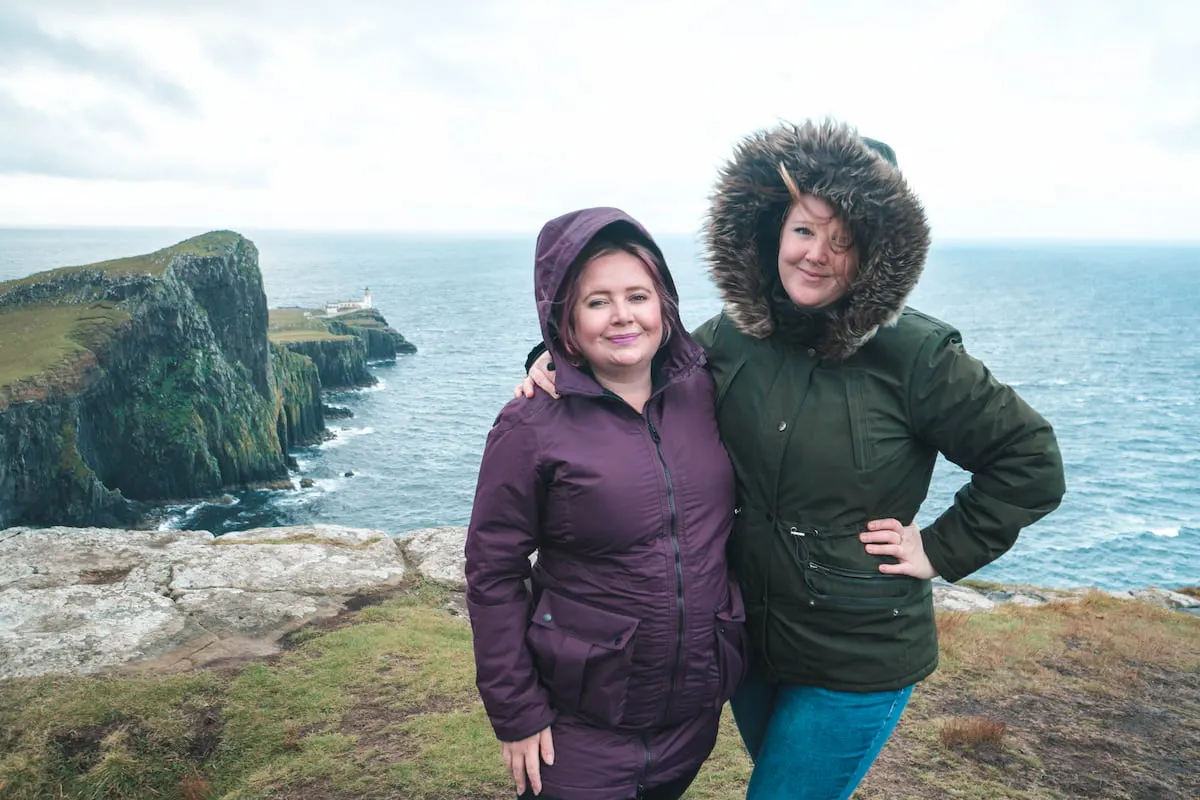
This may seem like an obvious suggestion, people don’t tend to go to Scotland for its weather after all, but it is one of the most important things to consider in preparation for your trip to Scotland.
I remember travelling from Italy to Scotland and I did not pack the right clothes! As I’ve travelled to Scotland every year since I moved to London I should have known better but there I was trying to layer all my clothes to keep warm.
The weather in Scotland is very changeable – one minute it can be blazing sunshine and the next pouring rain or crazy hailstones, so it is very important to be prepared for all occasions.
Thankfully I brought the most essential item a rain jacket! Due to the high winds in Scotland, an umbrella often will not last more than ten minutes in poor weather, so a sturdy waterproof is your best bet for sure. Something like this waterproof Weekend Jacket from Peter Storm, which comes in two colours red and yellow.
You will also want to pack layers of warm clothing, even if visiting in the summer. Summers in Scotland can see temperatures as high as 27 degrees celsius during the day, but even in the hottest times the evenings get chilly, and the temperature is often misleading and can feel much colder due to the wind. If you prepare by bringing the right layers, you can still expect to sit out on a summer night!
Wear Comfortable Walking Shoes
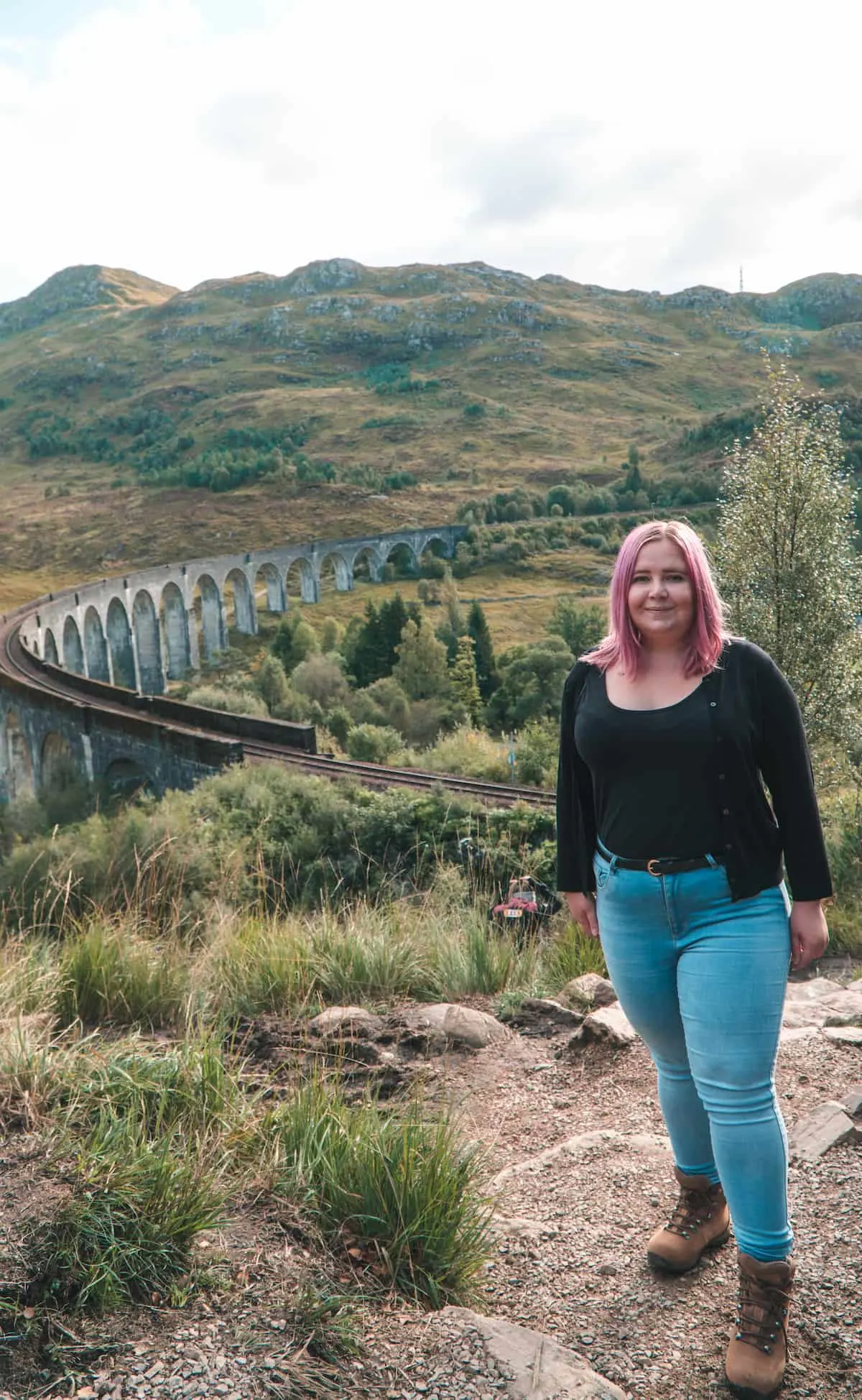
Whether it’s walking around one of the Scottish Cities or hiking somewhere in the Scottish countryside, comfy shoes are a must. A pair that is waterproof is a bonus as well! It rains a bit in Scotland so these will keep your feet nice and dry.
Most of the cities will have cobbled streets so high heels or any shoes that aren’t compatible with this should be left behind. I tend to pack trainers and walking boots when I go as they cover both scenarios. I own these Brasher walking boots which are super comfortable, you can check out the latest styles on Blacks. If there are no walks planned then skip the walking boots.
Then for evening nice ankle boots or some flats.
Avoid August in Edinburgh – Unless Attending the Fringe Festival
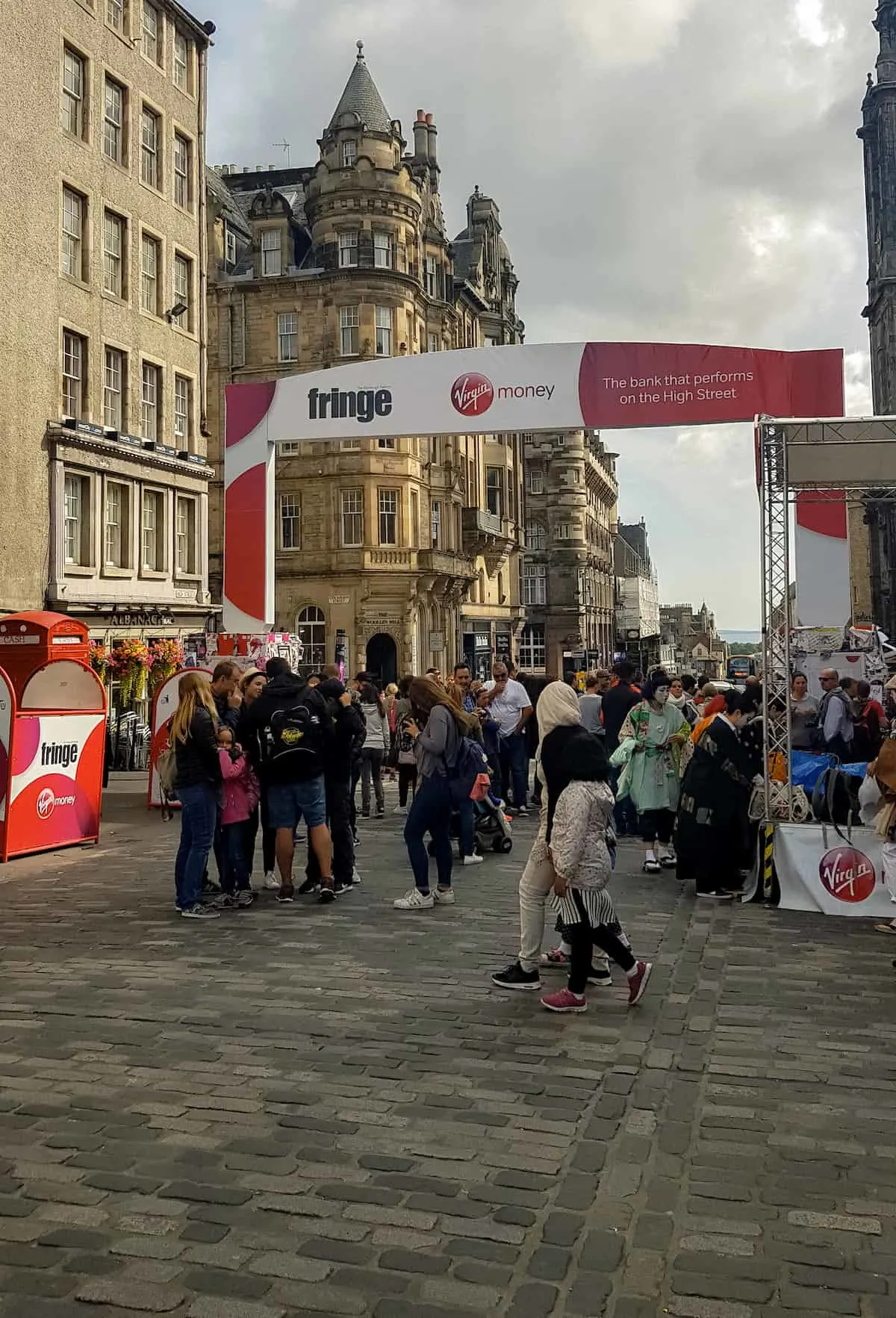
The world-famous Edinburgh Fringe Festival happens every August and brings in thousands of people each year. For the full month of August, the streets are full of tourists attending the various theatre, comedy and music events.
Whilst it’s a great time to visit Scotland, if you’re trying to cut costs or avoid crowds it’s best to skip this time of year.
Pro tip: if you’re planning on going to the Fringe Festival book accommodation as soon as you know you’re going. I try and book accommodation in January or the year before to get the best deals.
If you are booking the train there, tickets open 12 weeks before your travel dates. Any tickets offered before then will be advanced tickets and these are the most expensive train tickets you can buy. To find out the latest prices check the Trainline website.
Book Accommodation in Advance
The popular routes around Scotland get booked out fast, areas like Glencoe, Fort William, the Isle of Skye or Inverness. Once you have confirmed your dates for your visit book ASAP!
Explore Scotland Off the Beaten Path

Every destination has the typical bucket list items and there are plenty of amazing places to see in Scotland. My favourite moments have been getting off the beaten path and experiencing the hidden gems.
On the Isle of Skye, the drive to Dun Scaith Castles was one of my favourite drives on the Isle of Skye. It takes you to areas not as many tourists go down, we stopped Starting point for the walk can be found here.
Or explore one of the Islands like the Isle of Mull which is an easy ferry ride from Oban which is included in my 7 Day Scottish Highlands Itinerary.
Book Ferry Crossings in Advance
A friend prewarned me to book my car on to the ferries in advance after missing out on space for their trip to the Isle of Mull. This saved me on my trip so I passing this tip on to you! I managed to get the timeslots I wanted the week before thanks to this tip.
Ideally, allow at least a week in advance to book this or once you know your dates. Calmac Ferries is the ferry service, book your tickets here or save for later!
Don’t Drive, Try the Spirit of Scotland Travel Pass
Driving is not for everyone! The best way to travel around Scotland without a car is by public transport and due to the good connections, you will be able to do this with ease. Consider getting the spirit of Scotland travel pass which includes travel on trains, buses, coaches and ferries.
There are two passes to choose from, four days unlimited travel over eight consecutive days or eight days unlimited travel over fifteen consecutive days. Find out more on ScotRail’s website.
What’s the Difference Between Scottish and British Money?
The Bank of England is the central bank for the UK it is a legal tender that must be accepted throughout the UK.
However, in Scotland the retail bank’s Bank of Scotland, Royal Bank of Scotland, and Clydesdale Bank each issue their own Scottish banknotes. These are legal currencies that can be used to pay for goods and services but outside of Scotland, you may find businesses a little more reluctant to accept them. This is because they are not issued by the Bank of England.
If you find yourself in other countries of the UK and not accepting your Scottish banknotes, pop into a bank to get them exchanged.
Invest in a National Trust Membership
National Trust membership is perfect if you’re planning to visit a lot of the sights included within the trust. From coastlines to castles, art to architecture, wildlife to wilderness, there is something for everyone.
If you’re living in the UK then consider a yearly membership as you will get free or concessionary entry to places owned by National Trust organisations including in England, Wales and Northern Ireland. Not only does this save you money at each individual place it includes parking!
Find out more about the National Trust Membership here.
Edinburgh is Colder – but Glasgow is Wetter!
Edinburgh, being closer to the sea, tends to be much colder as a city, with a harsher wind coming in from the coast. The rainfall is not as frequent or as heavy, although it may not feel that way (Scotland is still a very rainy country as a whole), you really want to focus on layering up and keeping warm in this windy city.
Glasgow is a far warmer city due to being further inland but as it is still situated on the west coast, it does have far higher rainfall than its east coast counterparts. It rains in Glasgow every month of the year, so even in the summer months, you won’t be able to escape it! Once again, a rain jacket is your best bet.
Narrow Roads
Growing up driving on Australian roads I had to get used to driving on the narrow road here. Not all cars can drive on the roads too! As I was driving around Isle of Skye I frequently saw signs saying that motorhomes would be too heavy or wide for the roads.
It’s a little adjustment but it is easy to get used to these. They do add more time to your journey so buffer this in, as well, as your vehicle size.
You Won’t See Really See People Wearing Kilts

As much as we would love the scenes of Outlander when we visit, the Scots only wear kilts for special occasions (i.e. weddings) for the most part. Psssttt – if you find a busker in a kilt playing the bag pips then they deserve a tip. It’s such a difficult instrument to learn and takes years! Plus you’ll probs snap a photo of them and give them the funds to continue playing.
Explore the Natural Beauty of Scotland
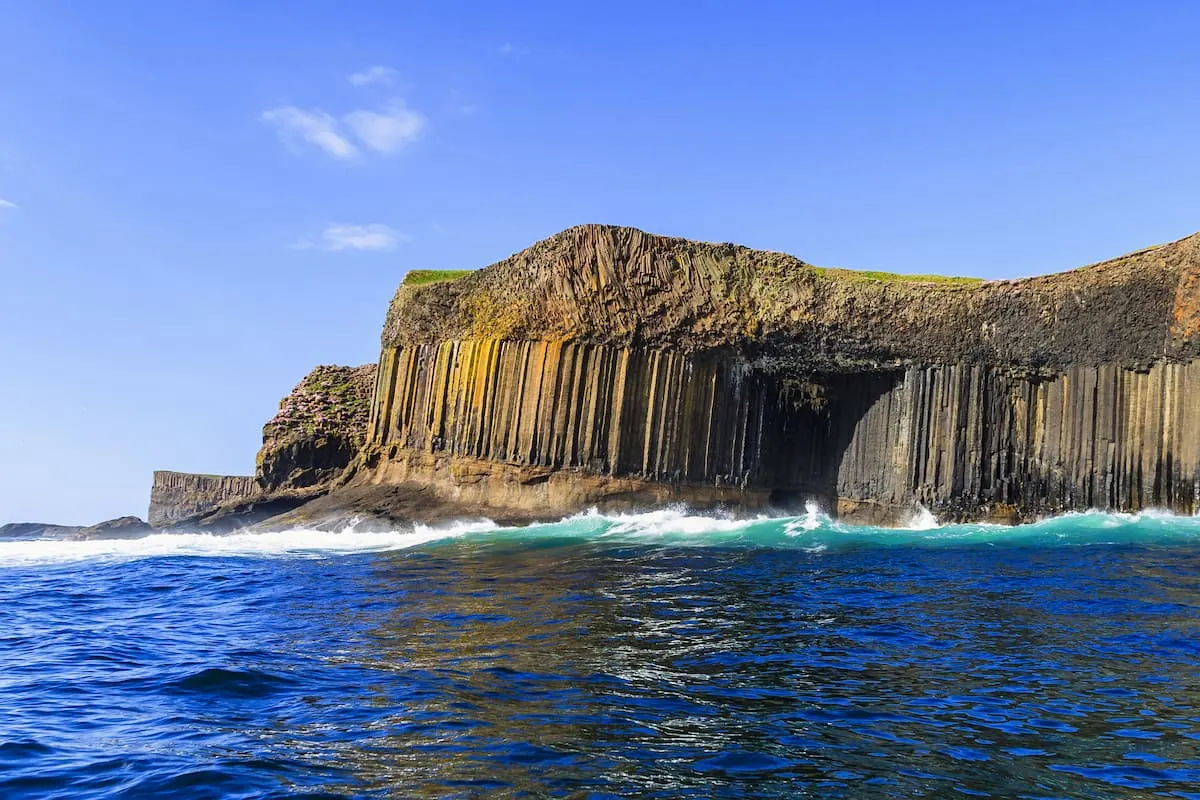
Every corner your turn in Scotland you will be in awe with its natural beauty from its beautiful coastline, towering mountains and enchanting islands.
This means there will be lots of natural attractions and you won’t need to travel far to find them. Here are some of my picks:
- Fingal’s Cave – this has been on my list for years! On the Isle of Staffa you will find the Scottish version of the Giants Causeway. This does require a boat tour to get there and you can find tours leaving from Oban. During the summer you may even get to see puffins!
- Star Gazing in Galloway Forest Park – the UK’s first designated Dark Sky Park, the forest offers the best conditions for stargazing. You’ll be able to see more than 7,000 stars and planets.
You Might Experience a “Language Barrier”
Just like any country accents will vary but the thick Scottish accent can be hard to understand if you’re not used to it. It’s something to be mindful of and just let them know if you’re struggling to understand.
Scottish Gaelic
English is the main language, however, the Celtic language of Gaelic is still spoken throughout Scotland and it is considered the founding language of the country. Don’t be surprised when you see bilingual road signs, discover the tv channel dedicated to Gaelic or hear people speaking it in the Highlands.
Paying With Debit and Credit Cards
Paying by card is widely accepted throughout the country. Visa and Mastercard are the most accepted cards, major retailers will accept American Express. Make sure you have a Visa or Mastercard with you when you travel.
I always like using Wise as my travel card as they make it easy to keep multiple currencies and get the best exchange rates.
Tour Responsibly
Scotland’s Highlands and Islands are known throughout the world for their stunning beauty and has many visitors every single year. This is great for Scotland, as its economy thrives on tourism and it brings great support for the small businesses in rural areas.
However, we need to support responsible tourism and minimise our negative impacts on the environment and local communities. This is something that we learn over time while travelling and being conscious about it builds the habits over time.
Taking care of the landscape mostly comes down to common sense, such as leaving sites how you found them, taking litter away and not dropping waste that conflicts with the natural ecosystem.
Or designing your trip carefully so that you’re leaving a positive footprint in Scotland. For example, instead of a big tour group opt for smaller organised tours like Rabbies who average about 10 people per group.
Instead of booking accommodation with Airbnb, see if you can book with the accommodation directly so they are getting money to support their small business.
Go On An Epic Road Trip
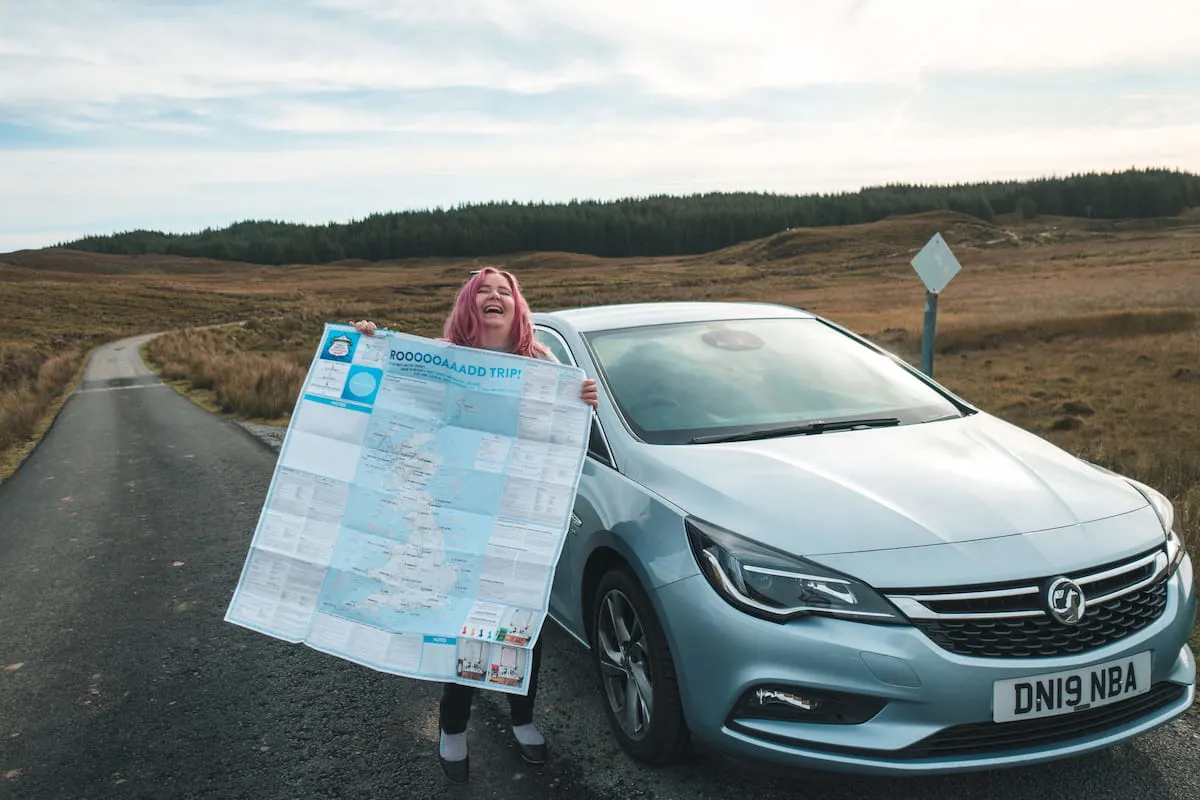
The best way to really explore Scotland is by car and there is no shortage of epic road trips you can go on.
- Central Scotland – this can include the country’s capital city, Edinburgh, as well as Stirling, Loch Lomond and Perthshire. This is a nice easygoing route, with more cities and towns than mountains and countryside – it’s great if you want to see the famous sight such as Edinburgh Castle or the Kelpies!
- The West Coast and Islands – you can hop between islands on car-friendly ferries to discover beautiful beaches and tall mountains. The west coast without a doubt has the best variety of urban and natural routes to take.
- Wester Ross – head far north to experience parts of Scotland that almost seem undiscovered! Still, serene lochs and towering mountains await you here (included in route 500).
- Angus – situated between Dundee and Aberdeen, this underrated section of coastline can be made into an entire holiday! This coastline is rugged and untamed, in the most perfect way!
- The East Coast – there are so many little hidden gems of towns on the East Coast, and every town has its own special charm. Food, drink and pretty harbours – all can be found on this coastline!
- The North Coast – take an epic journey along the whole north coast and discover Scotland’s most rural landscapes!
For more inspiration read 10 Scenic Places to Visit in Scotland by Car (That You’ll Love).
Visit a Loch That is Not Loch Ness
Loch Ness is one of the most famous and popular tourist attractions in Scotland, mostly due to the famous folklore that surrounds it. While it is fun to go and learn about the famous Loch Ness monster, it is a good idea to go off the beaten track a little more and explore some Lochs that aren’t as popular with tourists.
This also speaks to the previous point about touring responsibly; it is very important that we do not overwhelm the landscape too much, so why not go and explore some of the other many Lochs that Scotland has to offer?
Try Visiting Some of the Smaller Islands

Why not take a look into travelling to smaller islands, rather than crowding on the well-known ones that everyone else visits, such as Skye, Mull or Islay.
The small islands offer the same stunning scenery but without all of the tourists!
Try out Rum, Eigg, Muck or Canna instead – they are off the beaten track and you will certainly be rewarded for your efforts.
Simply take a ferry from Mallaig and explore these stunning islands on foot; you are protecting the landscape and contributing to overwhelming the popular islands much less!
There Is No Such Thing as Trespassing in Scotland
There is always a great opportunity to go off the beaten track in Scotland due to the Freedom to Roam act, meaning that you can wander wherever you please and do some real exploring. You can even camp anywhere you like as well, which should certainly be made the most of!
Watch Out for the Midges!
Thankfully, Scotland does not have any dangerous animals or insects, so there isn’t much that you have to watch out for. However, while the midges certainly do not pose any danger to people, they tend to come in huge quantities when you go anywhere near water in Scotland.
A midge is a small fly that is part of the mosquito family which can be found all over the world.
Unfortunately, Scotland has a particularly high volume of the type of midge that bites. Their bites can be very irritating, particularly if you get a lot of them at once, and so it is better to avoid them as much as possible.
The most effective way to avoid getting bitten is to cover up, and voice sitting out near water on still days and evenings. Of course, if you are camping then this can be difficult to stick to; but not to worry, you can purchase an inexpensive and wonderful antidote in the form of an after bite stick, designed to take the itch out of those pesky bites.
Stand Your Ground at the Pub
Bars and pubs do not do table service (unless it’s 2020/2021) – this is reserved solely for restaurants. In pubs, Scots go to the bar to get their orders and pay on the spot. This means that things can get pretty crazy on busy weekend nights and it is not uncommon to be four or five rows away from the bar at any given time.
That is why it is customary to buy a round of drinks for those that you are with, and they will do the same for you; this prevents an entire group of people queueing at the bar to get served for one drink. If someone buys you around, the general rule is that you will get up to get the next one at the bar when the drinks are coming to an end.
This may sound like a lot of nonsense, but in actual fact, it creates a great atmosphere and means that everyone gets talking while waiting for drinks. Being social with everyone you meet is part of the fun of getting out for a drink, so the Scots rarely mind being piled up at the bar for ten minutes before being served.
Respect the Queue
It is not uncommon for someone at the bar to wave you up first to be served before them – Scots are very friendly and polite as a general rule. However, queues, in general, are something taken seriously in Scotland, and skipping someone’s place in a queue without an offer is considered very rude. To avoid rubbing any locals up the wrong way, the best thing to do is to join a queue and wait your turn unless someone offers their spot to you.
Drink Your Whisky Right
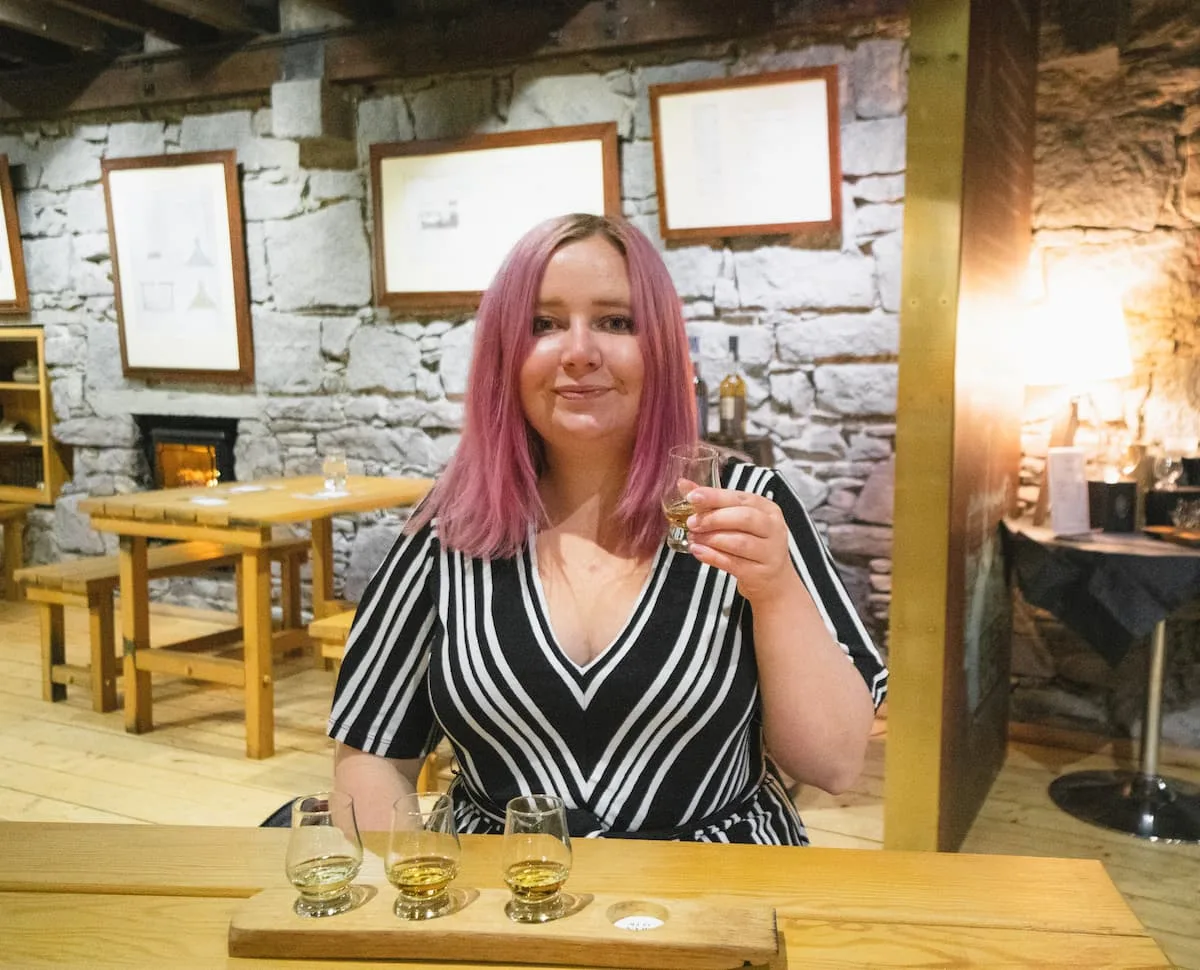
A trip to Scotland just would not be complete without trying some of the national drink – whisky.
A common mistake made by tourists is to order a ‘scotch’ at the bar, and drink it down in one as if it were a shot. In Scotland, however, it is called whisky by locals and it is bought in a measure referred to as a ‘dram’.
Once purchased, Scots savour whisky while drinking it; drinking it slowly and enjoying every sip. If you want to fit in with the locals, this is the way to drink your whisky.
Scots also do not mix their whisky with soft drinks, such as coke, and normally it is not to be had with ice either. You can, of course, order both, but if you want to fit in with the locals then neat whisky is the way to go!
If you know nothing about whisky, simply ask the bartender what they would recommend – they’re sure to have a favourite!
Haggis Is Great, but There Is More to Eat
Haggis is potentially one of the most well known parts of Scottish culture, and it has long been joked that it is the only thing Scottish people ever eat! While it can commonly be found on a menu, or deep-fried in a chip shop, it is not as common as one might think.
If you do not already know what haggis is made of, it is probably wise to do so before eating it. It is a pudding made of sheep’s heart, liver and lungs, mixed together with oats, spices, onion and salt, encased in a sheep’s stomach. If this sounds terrible to you, many places serve veggie versions which taste remarkably similar to the real thing!
In truth, haggis is wonderful and every tourist should certainly try it once – but if the concept of it is a little odd to you and you don’t fancy it, do not worry – there are plenty other things to eat!
Try Some Different Local Delicacies Instead
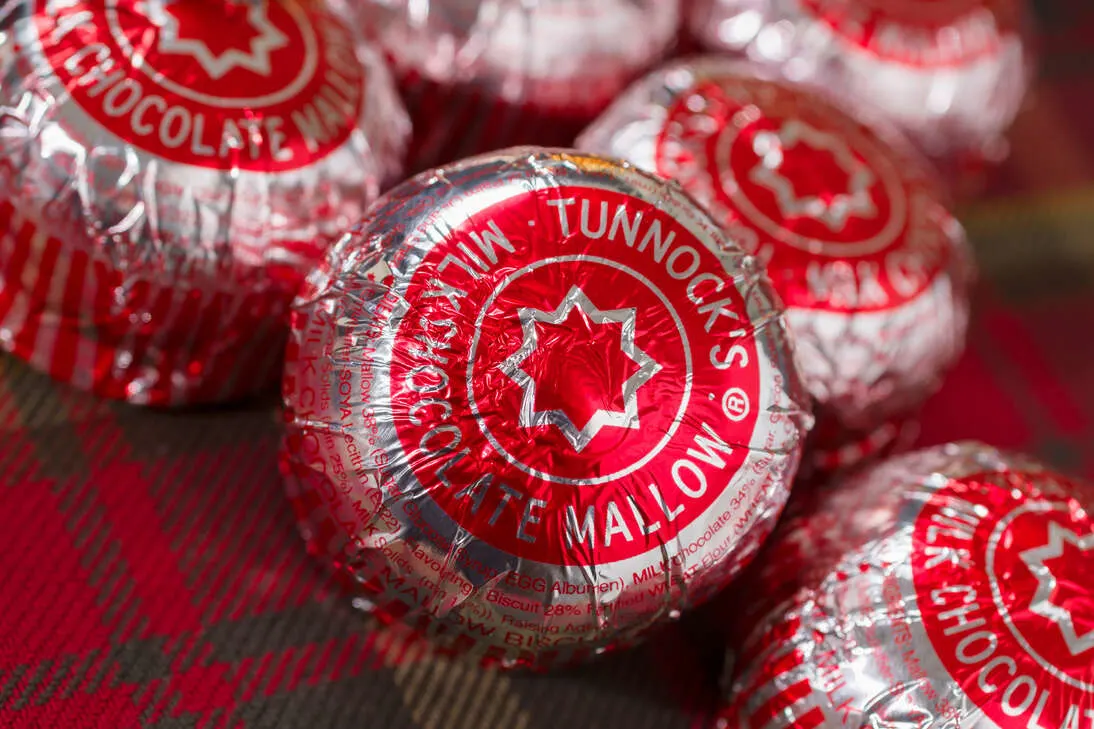
Scotland actually has many native foods and drink aside from the famous haggis; here are some of the best ones to look for:
Irn Bru
This brightly coloured soft drink is a must-try for anyone coming to Scotland. It can be found in pretty much any shop or supermarket and is inexpensive to try. We all know the Scots love a drink, right? Well, Irn Bru is a nationwide hangover cure – so if you do find yourself feeling the effects of one whisky too many, that would be the perfect time to try.
Shortbread
This delicious combo of sugar, butter and flour is a staple of Scottish home baking and a delicacy that you are sure to enjoy! It can be bought in supermarkets, but try and find some fresh baked if you can.
Oatcakes
You are likely to find many things made from oats as you travel the country, due to the fact that they are one of the only grains that grow well in the north of Scotland and have long since been the staple grain used in Scottish foods.
Oatcakes are baked oat biscuits which can be eaten savoury or sweet and are sure to keep you full for hours.
Cullen Skink
This is another delicacy of Scotland which, like haggis, is not to everyone’s liking. It is a thick soup made from smoked haddock, potatoes and onions and is served with bread. The smell is extremely strong due to the smoked fish, but it tastes absolutely delicious.
Stovies
You may notice that the majority of Scottish foods are stodgy, warming and hearty – it is surely needed due to the weather! Stovies are an absolute favourite to warm you on a cold day and can now commonly be found as street food as well!
The ingredients can vary, but traditionally they are made with chunks of potato, carrot and onions, then normally featuring some sort of meat or haggis. They are normally served with either oatcakes or bread to scoop up every drop!
Tunnock’s Tea Cakes
The Tunnock’s brand is an absolute favourite in Scotland, serving sweet treats to go with the huge proportion of tea and coffee drunk across the country.
The tea cake is comprised of a small shortbread biscuit, topped with gooey marshmallow and coated in milk chocolate.
Tunnock’s also have some other tasty treats, such as the caramel wafer or caramel log!
Tablet
If you have a sweet tooth then this treat is certainly for you! Tablet is a confection made from sugar, condensed milk and butter, hardening to make a more brittle version of fudge. It can only be eaten in small quantities by most due to the sweetness, but it is absolutely delicious!
Don’t Bother Trying to Drive in the Cities
The middle of the major cities in Scotland often suffers from bad traffic congestion, meaning that more often than not it takes longer to drive through the city centre than it would do to walk in the exact same area.
Walking through the cities also gives a unique experience of the place, particularly in Glasgow and Edinburgh where you cannot drive much through the centre of the cities anyway, and cars are forced to take far more roundabout routes instead, missing much of the main city centres.
Walking, on the other hand means you can experience every part of the city; pedestrianised shopping streets, cobbled side-alleys strung with fairy lights, and stunning parks – all just on the route of where you are trying to go!
Don’t Be Offended if People Aren’t Excited About Your Ancestry
Of course, it can be exciting to get to visit a place where parts of your family came from, but it is important to remember when speaking about your Scottish ancestry with people from Scotland that they hear this all the time. In fact, it is one of the most common things tourists will speak about when speaking to scottish locals. So don’t be too offended if people aren’t thrilled for you, they aren’t being rude, they just hear it a lot!
Instead, why not try to have a discussion with locals about their culture, heritage and history, to be more educated about the places where your ancestors are from. This is guaranteed to make you many friends in Scotland – Scots are very friendly and love to chat, especially over a drink!
Fast Facts
- Scotland uses the British Pound
- The national animal is a unicorn (I’m not joking)
- Glasgow is the largest city
- Perth is the newest city
- Scotland has over two thousand castles! The most popular are Edinburgh Castle, Stirling Castle, Urquhart Castle, St. Andrews Castle and Doune Castle.
- Most museums and art galleries are free to enter
- Drivers in Scotland drive on the left side of the road
- Scots is a language but is no longer spoken widely. All native Scots speak English.
- Gaelic is still spoken, but not by many people. Only around 60,000 people speak it now, mostly in the Outer Hebrides.
- Scotland is full of mountains – mountains over three thousand feet are called Munros – there are 282 of them
- There are over 120 whisky distilleries in the country and you can tour many of them, and have samples!
- There are 900 Scottish islands, most of them uninhabited. The main island groups are the Orkney Islands, the Shetland Islands, the Inner Hebrides, and the Outer Hebrides.
- Scotland hosts many world-famous festivals such as Edinburgh’s Hogmanay (New Year’s Eve), the Edinburgh Fringe, The Stonehaven Fireball Festival, Celtic Connections and the Islay Festival of Music and Malt.
- Scotland has very long summer days and very long winter nights due to how far north it is. In the summer you can expect daylight until 11pm during late June, however, in winter you are looking at darkness by 5pm in the north.
Overall, these tips will surely help you get by on your travels around Scotland, but overall you can’t go far wrong! The country is very safe and the people very laid back; if you ever need a hand with anything at all, simply ask around and someone will be willing to help you out!
Scotland is a welcoming place, and if you respect it, then it will respect you right back

Kat
Hi, I'm Kat, an Australian that moved to London in 2013 to start a new adventure. What a roller-coaster that was! I love helping others move to the UK and people explore the world! I’d be honoured if you’d say, “Thanks!” with a £3 coffee on Ko-fi.

